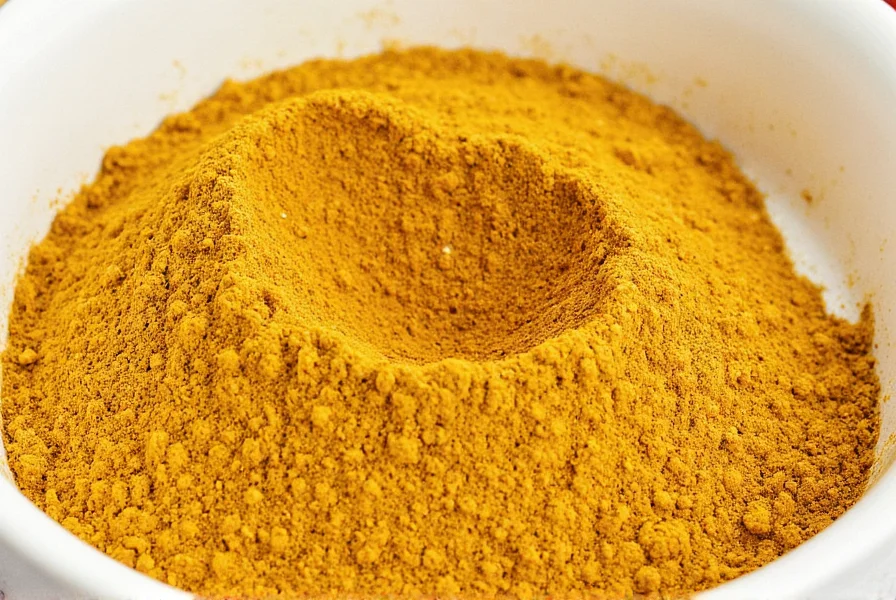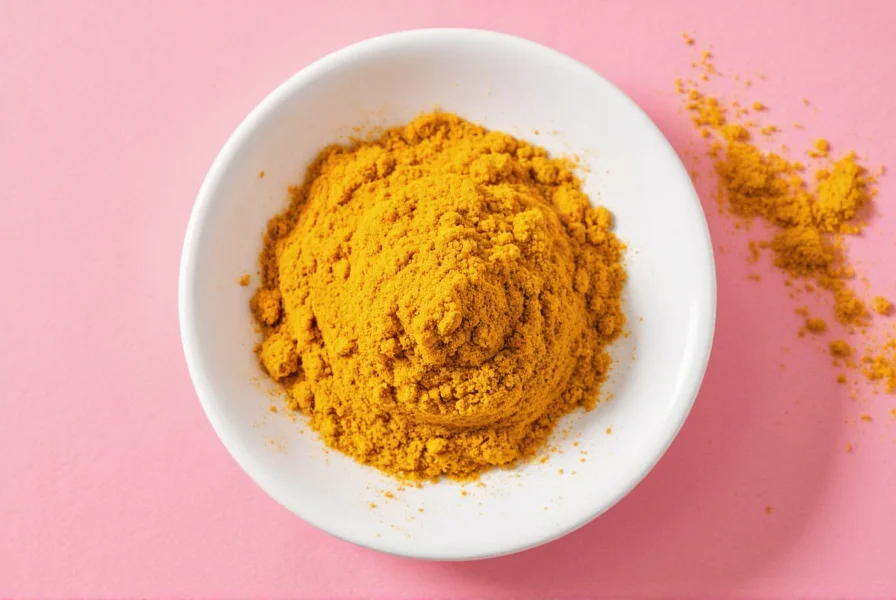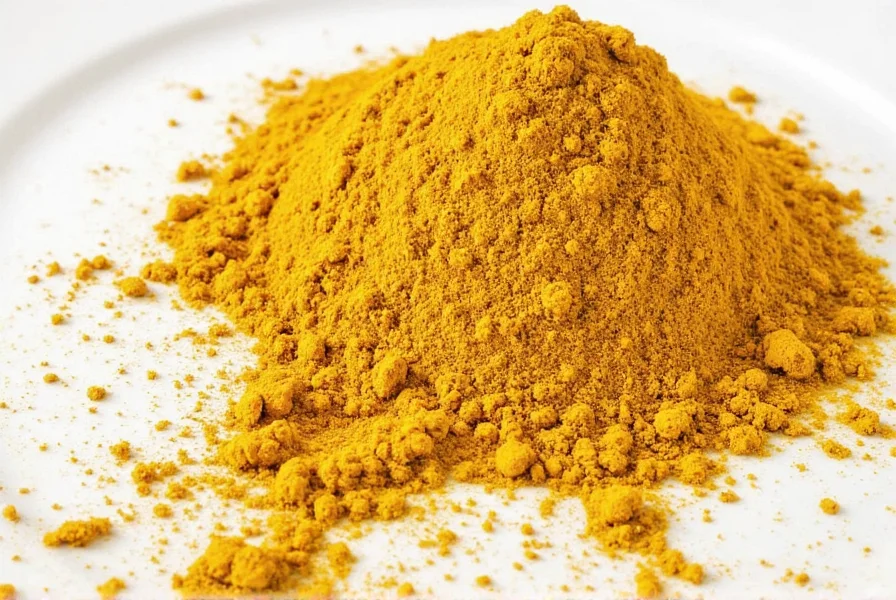Curry powder is a blend of spices commonly used in Indian and South Asian cuisine. The main ingredients in most traditional curry powders include turmeric, cumin, coriander, ginger, paprika or cayenne pepper, fenugreek, and black pepper. These seven spices form the foundation of most curry powder blends worldwide.

The Core Curry Powder Main Ingredients
Curry powder is far from a one-note spice. It's a carefully balanced blend that usually includes a mix of warm, earthy, and sometimes sweet or bitter notes. Here are the most common ingredients found in traditional curry powders:
- Turmeric – Adds vibrant color and an earthy, slightly bitter flavor.
- Cumin – Offers warmth and depth with a nutty undertone.
- Coriander – Brings a citrusy, floral quality to balance heavier spices.
- Ginger – Adds zesty heat and digestive benefits.
- Paprika or Cayenne Pepper – Responsible for varying levels of heat and sweetness.
- Fenugreek – Has a maple-like sweetness; used sparingly due to its strong flavor.
- Black Pepper – Enhances bioavailability of turmeric (hello, curcumin absorption!) and adds subtle heat.
Curry Powder vs. Garam Masala: What's the Difference?
You might be wondering how curry powder differs from garam masala — both are popular Indian spice blends, but their uses and ingredient lists vary significantly:
| Aspect | Curry Powder | Garam Masala |
|---|---|---|
| Main Use | Basis for many curries, soups, stews | Finishing spice blend added near end of cooking |
| Typical Color | Golden-orange (due to turmeric) | Brownish-red (less turmeric) |
| Heat Level | Moderate (depending on chilies) | Mild to medium |
| Key Spices | Turmeric, cumin, coriander, chili | Cinnamon, cardamom, cloves, black pepper |
How Each Ingredient Shapes Flavor
Let's take a closer look at how these spices come together to create that unmistakable curry aroma and flavor:
- Turmeric: Known for its anti-inflammatory properties, turmeric also gives curry powder its iconic golden hue. Its mild bitterness plays well with other warm spices.
- Cumin: Roasted and ground cumin seeds add a smoky, nutty base note. This spice helps anchor more volatile flavors.
- Coriander: Ground coriander seeds bring a light, lemony brightness that cuts through the richness of meats and sauces.
- Ginger: Fresh or dried ginger boosts the warmth and livens up the overall profile. Dried ginger works best in powdered form.
- Paprika / Chili Powder: Adds color and heat — the amount used depends on regional preference and desired intensity.
- Fenugreek: Used in small amounts, it contributes a slight sweetness reminiscent of maple syrup. Too much can turn bitter.
- Black Pepper: Not only adds heat, but also enhances turmeric absorption — making your dish not just tasty, but healthier too!

Regional Variations in Curry Powder Blends
One size definitely doesn't fit all when it comes to curry powder. Different regions have developed unique interpretations based on local tastes and available ingredients:
| Region | Main Flavors | Common Additions | Best For |
|---|---|---|---|
| India | Earthy, spicy, aromatic | Fennel, mustard, tamarind | Traditional curries, lentils |
| UK | Sweet, mild, rounded | Cinnamon, clove, allspice | Kormas, butter chicken |
| Japan | Sweet, rich, umami | Apple, caramelized onions, honey | Japanese-style rice curry |
| USA | Earthy, mildly spicy | Nutmeg, mace | Stews, roasted vegetables |
How to Use Curry Powder Like a Pro
To truly appreciate the complexity of curry powder, it's important to understand how to use it effectively in cooking:
- Toast It First: Dry-roast the powder in a pan before adding to wet ingredients. This unlocks essential oils and intensifies flavor.
- Pair with Oil: Fat carries flavor — always bloom curry powder in oil or ghee first.
- Add Early: Since curry powder is a foundational spice, add it early in the cooking process to allow flavors to meld.
- Balance With Acidity: Tamarind paste, lemon juice, or vinegar cut through the richness and brighten the dish.
- Don't Overdo It: A little goes a long way. You can always add more later if needed.
Pro Tip: Pair with Yogurt or Coconut Milk
The creamy texture of yogurt or coconut milk balances the spices beautifully. Try it in:
- Chicken Tikka Masala
- Korma
- Coconut Lentil Stew

Buying Guide: Finding the Perfect Curry Powder
Shopping for curry powder can feel overwhelming with so many options on the shelf. Here's how to pick the right one for your needs:
What to Look for When Buying Curry Powder
- Ingredient List: Shorter is better! Avoid additives like MSG, preservatives, or fillers like cornstarch.
- Color: Bright yellow indicates high turmeric content. If it looks dull or grayish, it might be old or low-quality.
- Aroma: Open the jar — if it smells vibrant and fragrant, you're in good shape. Musty or stale smells mean it's past its prime.
- Origin: Some brands specify where the spices were sourced (e.g., Kerala turmeric or Rajasthani cumin), which can affect quality and authenticity.
Top Recommended Curry Powders
Here are a few top-performing curry powders worth trying out:
- McCormick Madras Curry Powder
- Features: Balanced spiciness, classic Indian-inspired blend.
- Advantages: Easily available, consistent quality.
- Use Case: Ideal for beginners and everyday curries.
- Target Audience: Home cooks new to Indian cuisine.
- Occasions: Weeknight dinners, slow cooker recipes.
- Shan Chicken Tikka Masala Curry Powder
- Features: Rich, bold flavor profile with pronounced chili and garlic notes.
- Advantages: Authentic South Asian flavor in minutes.
- Use Case: Restaurant-style meals without hassle.
- Target Audience: Busy professionals craving restaurant-quality food.
- Occasions: Weekend dinner parties, meal prepping.
- Dash of Delhi Handmade Curry Powder
- Features: Small-batch, organic ingredients, locally sourced.
- Advantages: Eco-friendly packaging, customizable spice level.
- Use Case: Cooking enthusiasts seeking premium quality.
- Target Audience: Foodies and serious home chefs.
- Occasions: Gourmet dishes, special occasions.
DIY Curry Powder Recipe: Make Your Own Blend
Want full control over your flavor profile? Making your own curry powder is easier than you think. Here's a basic recipe to get started:
Basic Homemade Curry Powder
- 2 tbsp ground turmeric
- 1 tbsp ground cumin
- 1 tbsp ground coriander
- 1 tsp ground ginger
- ½ tsp paprika (or cayenne for extra heat)
- ¼ tsp fenugreek
- ¼ tsp black pepper
Instructions
- Roughly toast whole seeds (if using) in a dry skillet over medium heat until fragrant.
- Grind them into a fine powder using a spice grinder.
- Mix all ground spices thoroughly in a bowl.
- Store in an airtight container away from sunlight.
Customization Ideas
- Mild Version: Reduce paprika, add ½ tsp cinnamon.
- Hot & Smoky: Add smoked paprika and crushed red pepper flakes.
- For Desserts: Blend with nutmeg and cardamom — great in pumpkin curry soup or spiced cookies!
Frequently Asked Questions About Curry Powder
What are the main ingredients in curry powder?
The core ingredients in most traditional curry powders include turmeric (for color and earthy flavor), cumin (for warmth and depth), coriander (for citrusy notes), ginger (for zesty heat), paprika or cayenne pepper (for heat level), fenugreek (for subtle sweetness), and black pepper (which enhances turmeric absorption). The exact blend varies by region and recipe, but these seven spices form the foundation of most curry powder blends worldwide.
Is curry powder the same as garam masala?
No, curry powder and garam masala are distinct spice blends with different purposes and ingredients. Curry powder typically contains turmeric as a primary ingredient (giving it that characteristic golden color) and is used as a base for many dishes during cooking. Garam masala contains warming spices like cinnamon, cardamom, and cloves, has less turmeric, and is usually added at the end of cooking as a finishing spice to enhance aroma. Curry powder tends to be spicier than garam masala, which has a more complex, warming flavor profile.
How is curry powder different across various regions?
Regional variations in curry powder are quite pronounced. Indian curry powder is typically earthy and spicy with turmeric as the dominant spice. British versions (influenced by Anglo-Indian cuisine) are milder and sweeter, often containing cinnamon and clove. Japanese curry powder is sweet, thick, and less spicy, sometimes containing apple or honey. Thai curry is less commonly found as a powder (they typically use pastes), but when it is, it may include lemongrass, galangal, and kaffir lime. American versions are often mild with a heavy turmeric presence, designed for broader appeal. These regional differences reflect local taste preferences and available ingredients.
Can I substitute curry powder if I don't have it?
Yes, you can create a simple substitute when you don't have curry powder. Combine 1 teaspoon turmeric, ½ teaspoon cumin, ½ teaspoon coriander, ¼ teaspoon ginger, and a pinch of cayenne pepper. For a more authentic flavor profile, consider adding a small amount (⅛ teaspoon) of fenugreek and black pepper. The ratio can be adjusted based on your preferred heat level and flavor profile. Keep in mind this substitute works best for recipes that call for 1-2 tablespoons of curry powder; for dishes where curry powder is the star ingredient, a store-bought or homemade blend will yield better results.
Does curry powder go bad, and how should I store it?
Curry powder doesn't technically "spoil" but loses potency over time. Properly stored in an airtight container away from light and heat, it maintains good flavor for 6-12 months. Signs it's past its prime include faded color (should be vibrant yellow-orange), lack of strong aroma when opened, or a musty smell. For best results, store curry powder in a cool, dark place like a pantry rather than near the stove where heat and light can degrade the spices more quickly. If you make your own blend, consider making smaller batches more frequently to ensure maximum freshness.
Final Thoughts: Curry Powder Is More Than Just Spices
Understanding the core ingredients in curry powder opens the door to deeper culinary creativity. Whether you buy ready-made or grind your own, this versatile blend can transform simple ingredients into something extraordinary.
So next time you reach for that golden powder, remember — you're not just seasoning your dish. You're stirring in centuries of tradition, science, and flavor magic.
Now go forth and experiment! Curry is meant to be explored — one sprinkle at a time.










 浙公网安备
33010002000092号
浙公网安备
33010002000092号 浙B2-20120091-4
浙B2-20120091-4